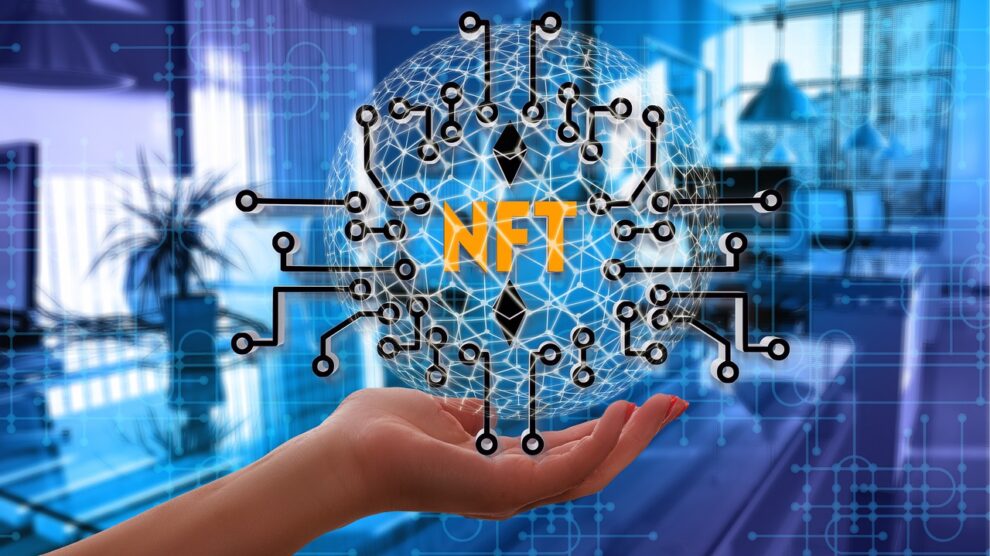For someone new to the world of cryptocurrency and blockchain, the rapid growth of interest in the non-fungible token (NFT) and its trading volume can seem outrageous. What’s more, the amount of money that’s been spent on a single individual NFT and the overall value of NFTs can seem shockingly high.
So are NFTs really worth what their buyers think they are?
The short answer is yes, they can be. A more accurate answer is that it depends on what you’re using them for.
So how can NFTs indeed constitute a value that stays? First of all, the world that birthed the non-fungible token phenomenon has itself shown substantial maturity. After all, cryptocurrency has become more established over the last few years. It can be used to buy a widening variety of goods and services, from something as special as a Tesla to something as prosaic as a smartphone bill. Crypto has a sometimes volatile but established value as an investment, and Coinbase’s IPO, not ICO, didn’t hurt.
However, is cryptocurrency really that different from what all of us are used to? We are all accustomed to money that’s not even backed by a gold standard, and even stable coins can be backed by collateralized fiat currency of the kind that we all spend and that governments back, as well as more tangible materials.
But it’s the specific difference between a crypto coin and a non-fungible token that makes the latter both more and less valuable. The NFT is more valuable in the sense that it represents something unique, but not as something tradable for another of its kind as a crypto coin is.
Any NFT has an inherent value in its rarity, and it doesn’t require liquidity to keep it viable the way cryptocurrency does.
What makes it potentially less valuable and more uncertain is how unsettled is the new kind of market that NFTs are creating for works of art. Anyone with an internet connection and at times just a few thousands of an Ethereum coin can create a non-fungible token on websites such as Rarible or OpenSea. It’s become one of those things that you learn how to do on YouTube and try to sell on your own. This makes it very hard to appraise a piece of NFT art compared to doing so with a piece of art sold in the traditional way.
That being said, is the experience of collecting non-fungible token art really much different than that of traditional art? What’s experienced with NFT art, especially in a virtual gallery, is not inherently different from a work viewed in a brick-and-mortar museum. A digital certificate of ownership proves that an original non-fungible token is authentic and can be bought and sold, and is backed by a piece of code that is guaranteed to be unique and not require a complex chain of provenance.
Moreover, even the relatively high unpredictability of an NFT’s value may be part of what makes NFT art and more unusual NFTs so appealing.
Anything can be made into a non-fungible token, from tweets to farts — $85 farts. And what about a urinal, a painting of Campbell’s soup cans, a banana taped to a wall — aren’t those pieces of what’s acceptable as art just as arbitrary? Don’t they show that the market for art as a commodity is distinct from any kind of rationale of sensual experience one might have with a piece of art?
Much More Than a Pretty Picture
Eventually, the uncertainty of how to value non-fungible token art will have to settle down, and when it does, it will be a more stable investment for the long term.
Beyond NFT art as a commodity, the other pieces of the NFT pie are much more well-cooked when it comes to sure long-term value. Even within the NFT art sector, securing value can be ensured, such as with ways to recoup money with smart contracts that require the original owner of an art NFT to receive a percentage of subsequent sales.
Apart from art, there’s definitely long-term value in sports collectible NFTs, as they authenticate a physical item for the buyer and prove it to be a genuine and unique thing.
Talk about staying power.
A sports fan is a sports fan forever, and a sports star is a sports star forever, too. And that applies to all kinds of sports collectibles, from what players wear to baseball cards with their faces on them, which no longer need to suffer from wear and tear when they are NFTs.
Another sector for NFTs that has staying power relates to one of the most established non-fungible tokens’ use cases — virtual spaces.
From SimCity to Second Life back in the day to more recent additions such as Minecraft, Fortnite, and Roblox, participation in online worlds has been important to many, including the buying and selling of virtual real estate NFTs, and selling items no longer needed in online games through NFTs is another way for NFT HODLers to recoup money.
The Ultimate Proof of NFTs’ Staying Power — Providing Unique Experiences
The staying power of online worlds and their communities underscores the current success and future promise of another fast-growing non-fungible token sector — virtual real estate NFTs. Sites such as Dependaland, Cryptovoxels, Somnium Space, The Sandbox, and Etherland provide virtual spaces that are becoming highly valuable. Even during a recent period when other NFT sectors saw values go down, values in the virtual real estate NFT sector rose.
Online worlds, also known as the metaverse, are not just about intricate castles and ogre-bashing weapons anymore, either. They are also about virtual worlds where “residents” and visitors can experience what they can’t in the physical world, with aspects of “real” real estate such as advertising helping buyers to recoup money in the virtual world, too. Furthermore, the element of community, such as that found in virtual worlds, has self-perpetuating staying power, with a virtually unlimited wealth of potential experiences to have with neighbors in virtual communities — as well as endless possible ways to monetize them — within the NFT economy.
In this regard, the up-and-coming virtual reality platform Republic Realm aims to build community engagement across a variety of platforms, providing a real-time output of underpriced virtual real estate listings and using findings to identify attractive acquisition targets.
And the Greatest Proof of NFTs’ Staying Power? They’re Useful!
Other companies, such as the Italian company Genuino, which is using non-fungible token technology for ensuring food safety, and AIKON, which will be integrating Republic Realm into its barrier-busting blockchain soon, show the more practical side of NFTs and represent not just financial value and the value of unique experiences but also value in ensuring security and safety in people’s daily lives.
Essentially, AIKON has created a seamless protocol and blockchain secure authentication with its API and ORE ID (a secure login tool for blockchain), as well as a super-secure multi-signature functionality with its ORE Vault (a multisig non-custodial crypto wallet for enterprises).
ORE Network transactions flow through the ORE Chain, a blockchain to handle the identities and digital assets it protects. The ORE Chain is designed to integrate with other blockchains, allowing one to use multiple apps, on multiple chains, with a single email address, SMS, or social login.
As long as making value from unique experiences and investments continues, blockchain developments such as non-fungible token technology that can breathe new life into them are bound to stick around — especially when they secure those experiences and investments.





